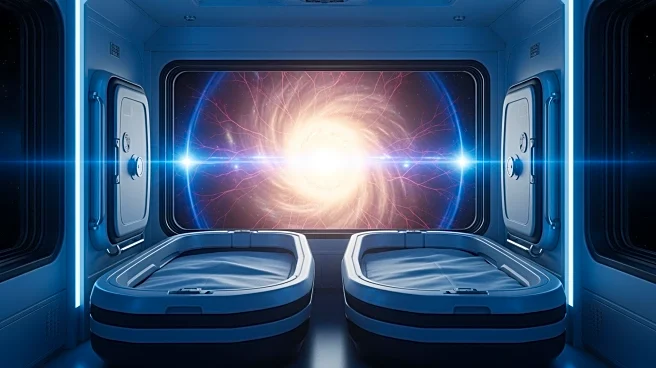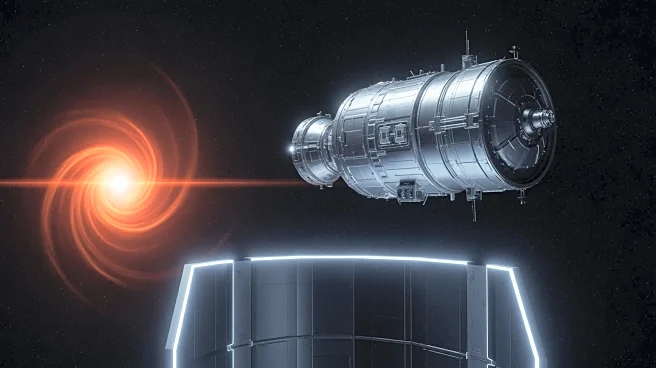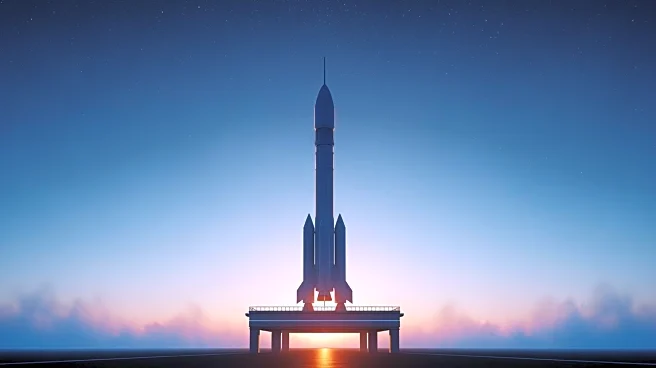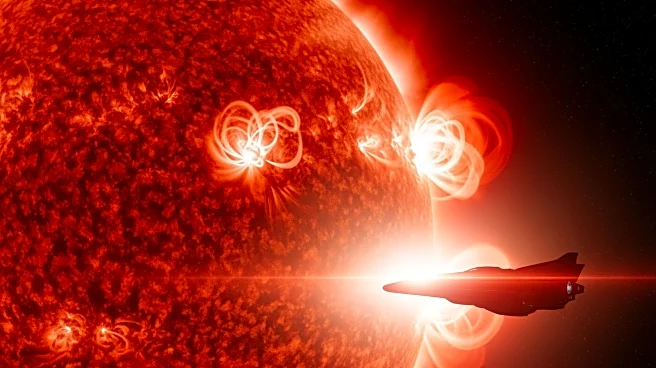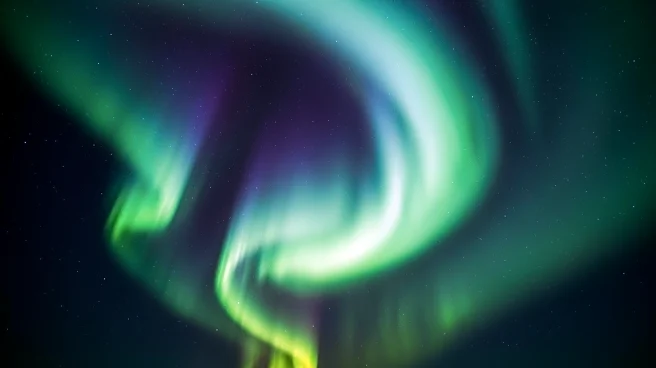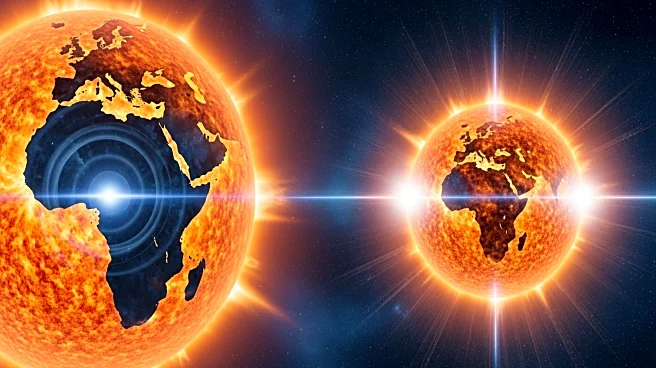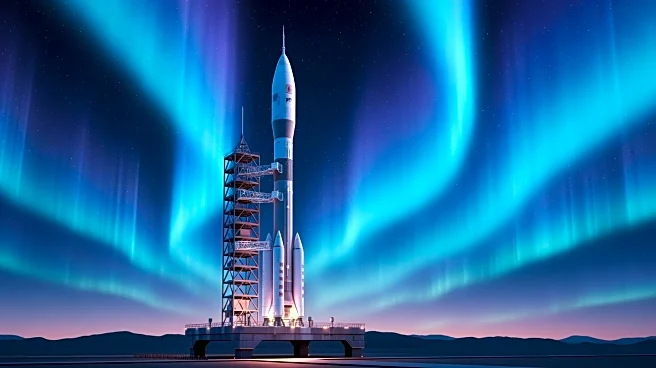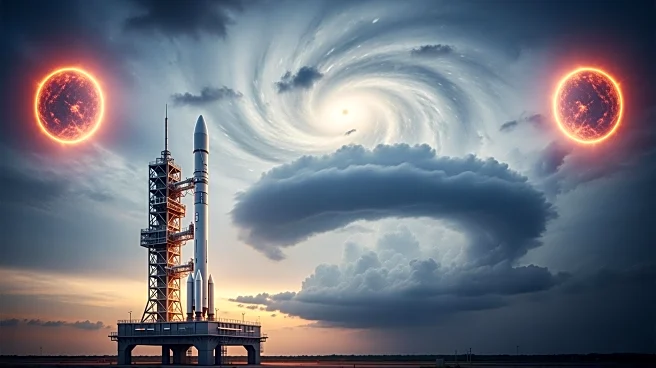What's Happening?
Astronauts aboard the International Space Station (ISS) have adjusted their sleeping arrangements due to a significant solar storm, referred to as a 'cannibal' storm. This storm, characterized by an explosion
of energy and solar materials from the Sun, poses a threat to satellites and the Earth's magnetic field, potentially disrupting navigation and energy infrastructure. The ISS crew, including three Russian cosmonauts, were instructed to sleep in the laboratory module as a precaution against high radiation levels. The solar storm has also caused radio blackouts in Africa and parts of Europe, delaying the launch of Blue Origin's New Glenn rocket.
Why It's Important?
The solar storm highlights the vulnerabilities of space missions to solar activity, which can impact both astronauts' safety and technological operations on Earth. The ISS's precautionary measures underscore the importance of radiation protection in space exploration. Additionally, the storm's interference with radio communications and rocket launches demonstrates the broader implications for global infrastructure and technological advancements. As solar activity increases during the Sun's 11-year cycle, such events may become more frequent, necessitating improved protective measures for both space missions and Earth-based technologies.
What's Next?
The ISS will continue to monitor radiation levels and adjust operations as necessary to ensure crew safety. The ongoing solar maximum phase suggests that similar solar storms may occur, prompting space agencies to enhance protective protocols. The scientific community may also focus on developing more resilient technologies to mitigate the impact of solar activity on Earth-based systems.
Beyond the Headlines
The solar storm incident raises questions about the long-term sustainability of space missions and the need for international collaboration in space weather forecasting. It also highlights the potential for increased investment in research to better understand solar phenomena and their effects on both space and terrestrial environments.


